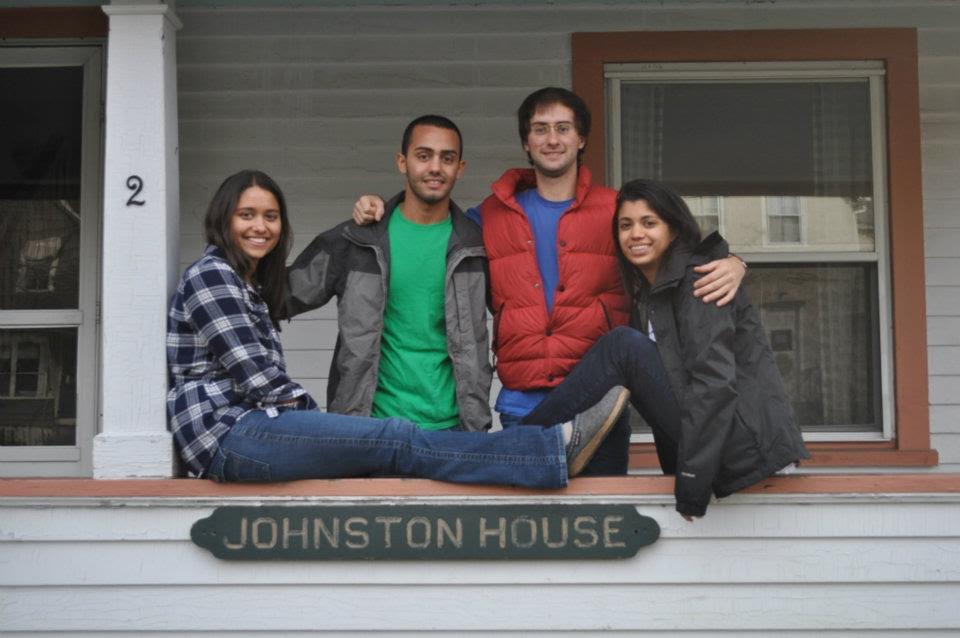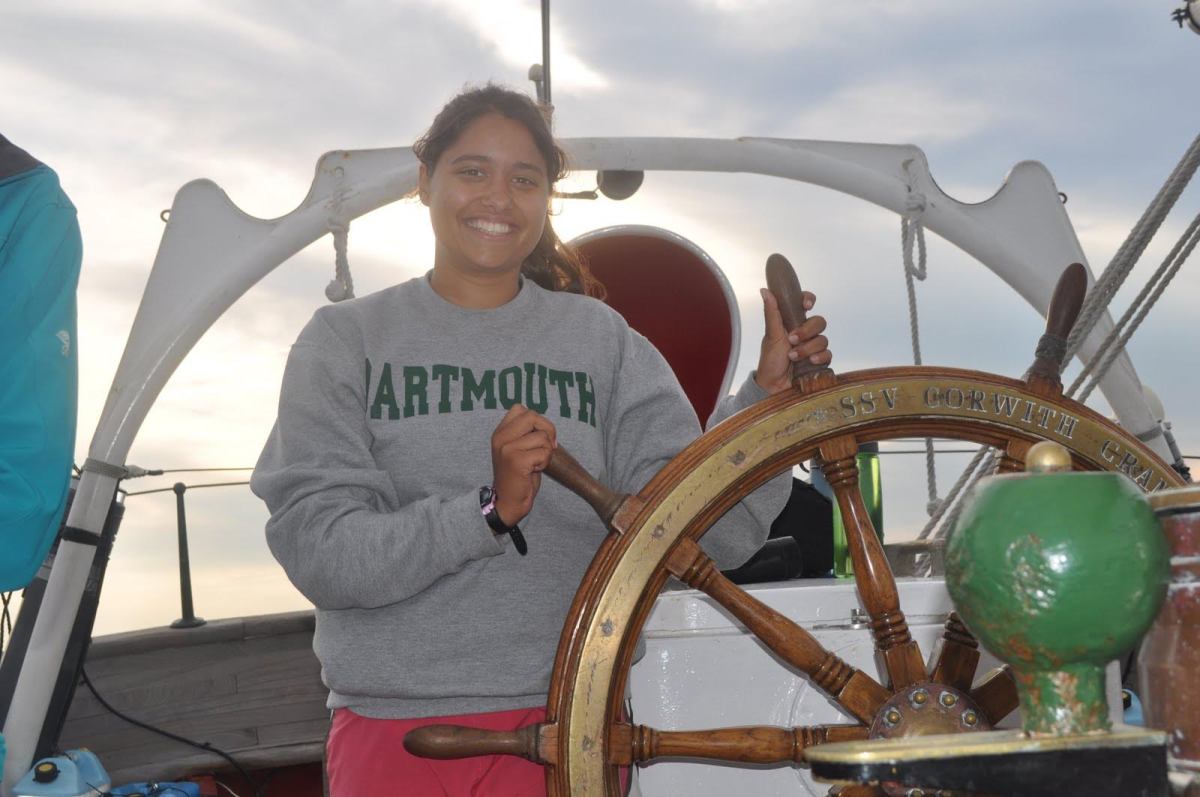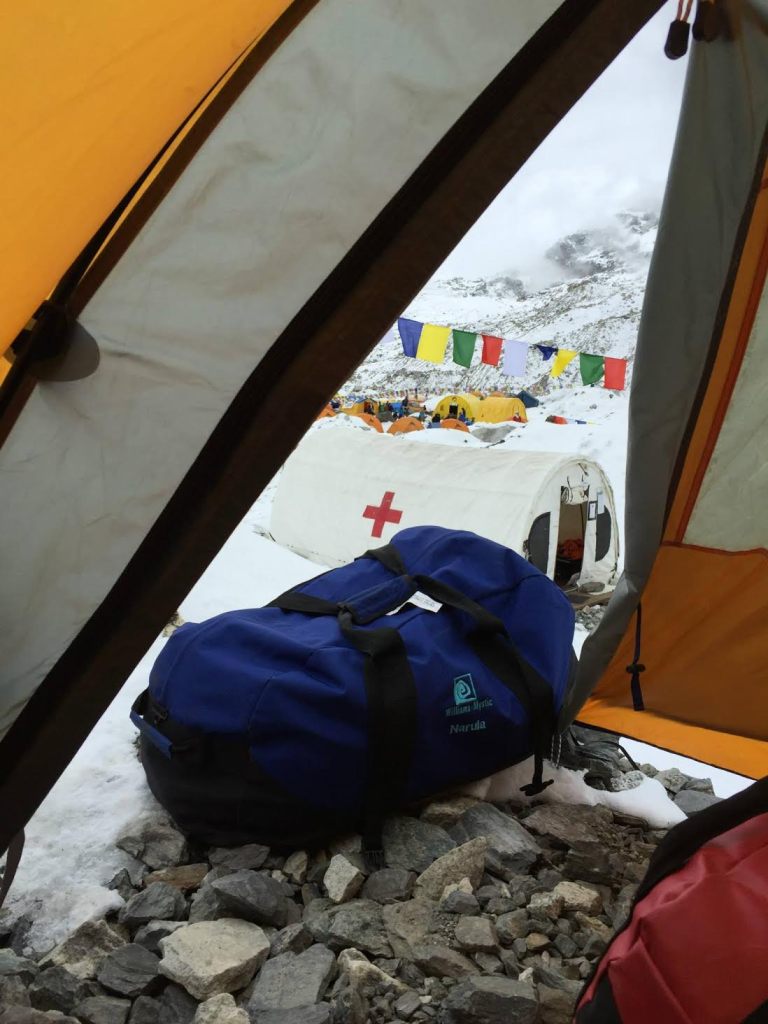Written by Hayden Gillooly S’19
Hayden is a senior Geoscience major at Williams College, with concentrations in Spanish and Maritime Studies. She is a Spring 2019 alumni of the Williams-Mystic Program.
“Williams-Mystic made me reconsider what I wanted to do and opened up the idea that anything I could do could be interdisciplinary. I couldn’t decide what I wanted to do [after graduation], and journalism is very interdisciplinary because you can write about human interest, crime, science. There are a lot of different subjects that you have to put your feet into. And you hop around as we did during Williams-Mystic.”
Svati Kirsten Narula, F’11, loves storytelling and is magnificent at it. She’s written a diverse range of stories including one about the 38th voyage of Mystic Seaport’s very own Charles W. Morgan, what it’s like to live in an underwater habitat , and the potential of oysters to help protect coastlines from the impact of hurricanes. Though Svati doesn’t just write about topics that connect to the ocean, she feels that if she “hadn’t gone to Williams-Mystic and seen how maritime topics and ocean can be connected to everything,” that she “would not have written so many ocean stories in my first year of journalism.” She added, “I did a couple of stories about the intersection of economics and the ocean, and I don’t think I could’ve pitched those stories if I hadn’t been to Williams-Mystic.” Svati has worked at The Atlantic, Outside Magazine, and Quartz, and is currently the Digital Editor for the Dartmouth Alumni Magazine. In writing stories, Svati deeply appreciates and loves “the intersection of adventure and science.”
When asked about her favorite Williams-Mystic memories, Svati, like most alumni of the program, couldn’t choose at first. “A real big highlight for me was my west coast seminar which was California. I loved caravaning up and down the coast and belting out music and becoming close,” her smile grew while talking, and I was reminded of my fond memories singing in the vans with my own classmates. It seems that there are threads throughout all semesters; moments that stand out for us all as special, fun, and impactful. “That was the trip where I bonded the most with my fellow shipmates. And getting out and running on the sand every beach stop. And seeing professors’ personalities when they’re driving you in the car.”

For Svati, these bonds forged in Mystic, CT, and across the country on field seminars, have remained strong. In fact, she FaceTimes frequently with one classmate, though they have not seen each other in person in 10 years. “It’s been really gratifying to stay in touch with several of my shipmates from F’ll,” Svati says. “They were some of the strongest friendships I made during my college years.” We discussed how Williams-Mystic allows students to build relationships at an almost unparalleled depth, due to the fact that you travel, live, and learn with each other constantly. Williams-Mystic classmates see all of each other’s highs and lows, and support each other through it all. Svati added, with a tinge of nostalgia, “I almost wish all four years of college could have been like that.”
Svati said that what makes a good story “changes depending on where you’re working and who you’re pitching to.” The key to the strongest stories, she notes is, “Being able to say something surprising about something that affects a lot of people and they don’t realize it,” such as “how horseshoe crab blood is important for the creation of vaccines and modern drugs.”
“There was one story that I wrote that went viral, about the history of exploding whales, based on the news that one dead whale was possibly about to blow up on a beach in Ireland. It was easy to make the connection between this event and the famous Oregon whale explosion of 1970, which there’s video footage of, so I wrote the story up in just 30 minutes and it ended up doing much better—as far as getting read and shared on social media—than other stories I had worked for days or weeks on.”
In April 2015, Svati was at Base Camp at Mount Everest for a journalism project when an avalanche ravaged the mountain following an earthquake. In fact, Svati brought her Williams-Mystic duffle bag on her trip (which was unfortunately lost during the fiasco)! At Base Camp, Svati was given a glimpse into a unique culture and world of Everest climbers and enthusiasts; people who dream their whole life of conquering the enormity and standing at the top of the Earth. She described that “growing up, I loved reading stories about mountain climbers but never thought I could be a part of that world. Mount Everest base camp has its own rules and cultures and the people there have different priorities than people in New York City where I was living.”
Though she felt like “an outsider in a harsh place,” Svati said that “it was amazing to have Everest looming over you. You begin to understand why people want to climb it. A lot of people want to climb it and don’t need to go there first to know that. For me, being in the present and trekking through that little bit of Nepal, and the local food and breathing that high thin air is kind of intoxicating in its own way. And it’s cool that storytelling allowed me to do that.”
A difference between Svati and the climbers was that “The climbers there were more prepared to possibly die, so they weren’t as shaken up as I was by the earthquake and the avalanche. Many people went right back the next year. They had their dream disrupted by a force of nature totally out of their control, and they jus twanted to go back and make their dream happen. At first, I thought they were totally crazy, but now I, too, would go back if I could.” Svati explained that the experience of being at Mount Everest during an avalanche highlighted life’s fragility, but that the rush of being in the face of such beauty has encouraged her to be more adventurous and seek out new experiences. She said that it’s important to her “to try and collect as many experiences as I can” and that “to get experiences, you have to be open and cultivate openness.”
When asked about the role that storytelling and narrative play in increasing engagement with sustainable behavior and raising awareness about the urgency of climate change, Svati responded, “I think it’s huge. So many people will never get the opportunity to see trash in the ocean up close because not everyone lives close to the ocean. The vast majority of us won’t have a chance to see how sea ice is melting. I interviewed a scientist recently who is studying arctic sea ice up close. Most of us get our ideas about this topic from storytelling in the media—that’s all we have for those of us that can’t experience things first hand. I’ve seen the photographs, and the articles, but asking people who have experienced it firsthand again and again is how we get closer and closer to understanding things.” Svati then reflected on a phrase from Williams-Mystic Marine Policy Professor Katy Robinson Hall S’84, that has resonated with her: “we protect what we value and we value what we know.”
Svati closed our conversation by saying that “A sense of adventure could mean saying yes to a new job or choosing to move across the country. It doesn’t have to be traveling to Mount Everest.” Hearing stories of Svati’s bravery made me think about how we all need to have our own Everests: the passions and goals that ignite a fire within us and encourage us to lean into discomfort and newness with grace. What’s yours?












 This post was written by S’18 alumna
This post was written by S’18 alumna